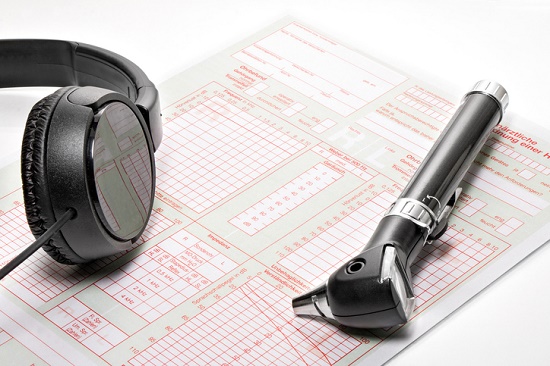
The hearing exam truly is the easy part. The difficult part is acknowledging your hearing loss and actually reserving the hearing test in the first place.
You have more than likely heard the stats by now: 48 million individuals in the United States have hearing loss but only a small fraction actually do anything about it, and only 20 percent of those who could benefit from hearing aids actually utilize them.
So if you’ve already scheduled your hearing test, great job, you’ve already overcome the most significant obstacle to healthier hearing.
The hearing test, as you’ll discover, is an easy, non-invasive procedure that will identify the magnitude of your hearing loss to help determine the most suitable treatment course.
After you first arrive at the office, you’ll start by submitting some paperwork. Then, you’ll meet with your hearing care provider to talk about your hearing health history.
Your Hearing Health History
Your hearing loss, if present, can be brought on by direct exposure to loud sound, the normal aging process, or by an underlying ailment. You’ll want to rule out any underlying medical conditions prior to proceeding to the actual hearing exam.
If you have an impaction of earwax, for instance, you may very well be hearing better within minutes after a professional cleaning. The presence of any other ailments will be considered and the applicable referral made, if required.
After reviewing your general medical history, you’ll go over your exposure to loud sounds, your hearing loss symptoms, and what you would like to achieve with better hearing.
It’s crucial to establish potential causes, how symptoms are negatively affecting your life, and how better hearing will improve your life, which is after all the entire point. Be skeptical of the practitioner that doesn’t seem to care about the reasons why you desire to improve your hearing in the first place.
The Hearing Test
There’s one additional step to take prior to beginning the hearing test: the visual examination of the ear with a device known as an otoscope. This will help rule out any issues with the ear canal, the eardrum, or the surplus buildup of earwax.
Next, you’ll be escorted to a sound-treated room with your hearing care provider. You’ll be required to put on headphones, and the specialist will begin to play you some sounds.
You’ll be presented with different sounds at assorted frequencies, and you’ll be asked to identify the quietest sounds you can hear at each frequency. This is termed your hearing threshold, and the hearing care provider will document these values on a graph called an audiogram.
The hearing test may also incorporate speech testing, where you’ll be instructed to repeat the words presented to you. Assorted types of words, presented at various volumes with and without background noise, will be presented. This will help determine if hearing aids can assist you with speech understanding.
When the hearing test is concluded, your hearing care provider will go over the final results with you.
Reviewing Your Hearing Test Results
Referencing your audiogram, your hearing care provider will now talk about your hearing in both ears. Determined by the results, your hearing will be characterized as normal or as displaying mild, moderate, severe, or profound hearing loss.
If a hearing loss is found, the next step is going over your treatment options. Seeing that there are no current medical or surgical treatments to repair hearing damage, this means comparing your hearing aid options.
Present hearing aids are available in a wide variety of shapes, sizes, and colors, at a variety of price ranges with several advanced functions and features. In selecting your hearing aids, it’s crucial to work with a competent hearing care professional for three reasons:
- They can help you find the ideal hearing aid model to meet all of your goals.
- They can help you identify the advanced functions you need—along with the ones you don’t—at a price that fits your budget.
- They can program your new hearing aids to enhance only the sounds you have trouble hearing—established by the hearing test—ensuring optimal sound quality.
And that’s it, a fast, simple process in return for a lifetime of better hearing. We’d say that’s a pretty good deal.
We look forward to seeing you!
